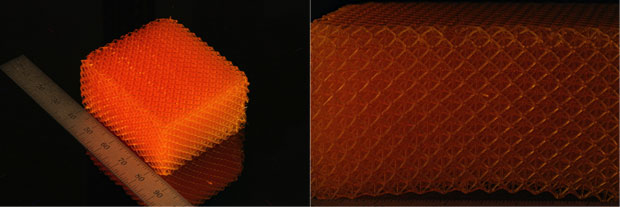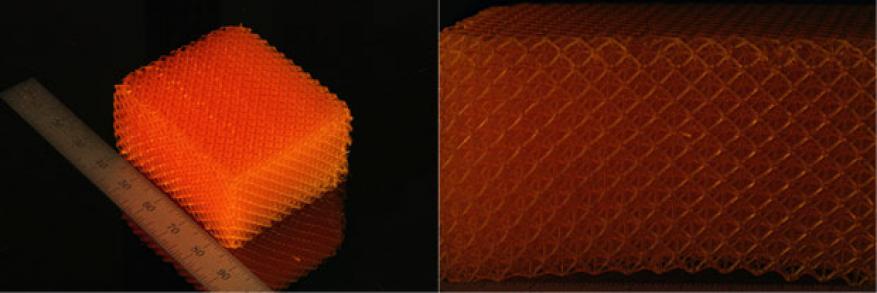Marcus Worsley (16-ERD-051)
Project Description
Energy-related processes—such as energy storage, catalysis, and desalination—couple mass transport (of the bulk of the solution to the surface of the electrode) with the electrode processes. For flow batteries (a type of battery where recharging capability is provided by two liquid chemical components separated by a membrane), the need for fast mass transport is especially significant, because these systems use dilute solutions that are prone to forming concentration gradients, which lead to efficiency losses. Energy technologies such as flow batteries need to utilize electrodes that possess bimodal pore structures (macro- and micro-pores) to maximize both diffusion efficiency and accessible surface area. Optimizing pore morphology for this application is difficult. For example, current flow batteries frequently use micro-fabricated channels coated with high-surface-area conductive materials to strike a balance between reaction rate and mass transport. However, the photolithographic fabrication approach makes design optimization a difficult and costly process and limits the channel architecture to two-dimensional geometries. We are developing a fundamental understanding of how pore morphology such as size and shape impacts the performance of flow-through electrode devices. Our goal is to use novel additive manufacturing capabilities to fabricate prototype electrodes with controlled pore sizes and geometries in concert with computer modeling to optimize flow-through electrode designs in terms of performance and efficiency. This approach, which was impossible until recently, will provide critical insight into the significance of pore size and orientation for flow batteries, and potentially allow these batteries to achieve much higher energy and power densities.
We expect to use flow modeling and optimization to design the pore morphology of an electrode that effectively decouples the interdependence of mass transfer and reaction rate (i.e., surface area) on a global scale. The design will allow mass transport and reaction rates to be independently optimized, resulting in significant gains for both the performance and efficiency of a flow battery. Once the optimal design has been determined, novel additive manufacturing techniques such as large-area projection micro-stereolithography will be used to realize the prototype electrodes. Large-area projection micro-stereolithography is a photochemical and optical technique that uses a dynamic virtual photomask (a photographic pattern used to make integrated circuits) to rapidly create complex three-dimensional architectures in a layer-by-layer fashion. The system can fabricate prototype electrodes tens to hundreds of cubic centimeters in volume with engineered porosity in the range of 1 to 100 µm (see figure). Finally, electrode characterization will focus on attributes that will be relevant to their use in flow batteries. By the end of this project, we will have developed a capability that allows us to rapidly design and produce engineered, high-performance flow-through electrodes tailored for specific applications. Existing Laboratory programs in water purification, catalysis, and energy storage will benefit from the capability and knowledge gained from this effort.
Mission Relevance
With targeted applications for flow-through electrodes in energy storage and capacitive desalination, this work is related to the Laboratory’s strategic focus area in energy and climate security. In addition, with a focus on material feedstock and transport modeling, we will leverage and advance the Laboratory’s core competencies in advanced materials and manufacturing and high-performance computing, simulation, and data science.
FY16 Accomplishments and Results
In FY16 we (1) finalized design of the flow-through electrode characterization apparatus, (2) began initial assembly of the characterization device, and (3) created an initial flow-through electrode forward model.







